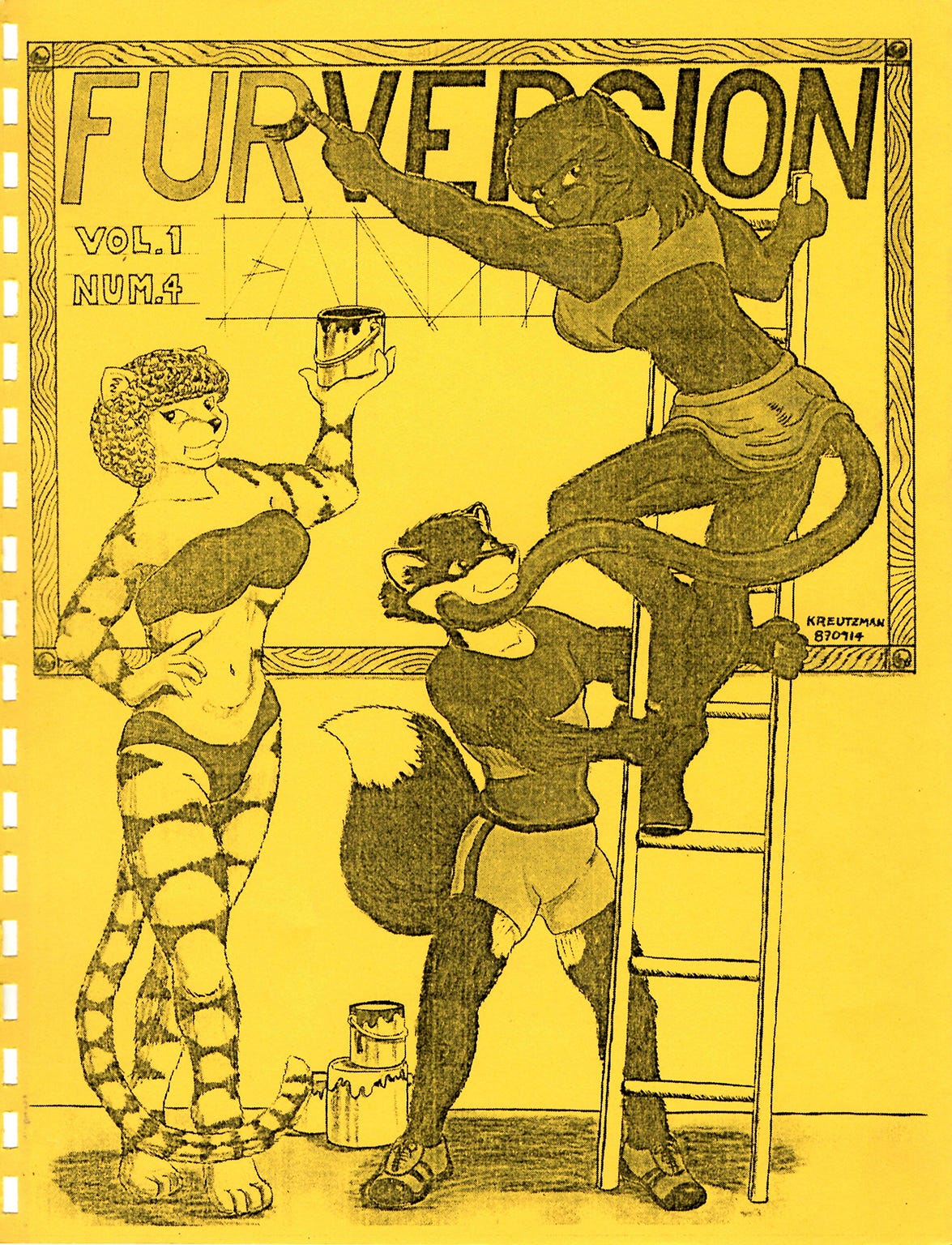I’ll start with this caveat: not all furries. I’ve interviewed furries before, read their books, watched their documentaries, even admired the artistry of fursuits.
The furry fandom began to coalesce in the late 1970s and early 1980s, when science fiction and comic book fans started trading and creating stories about anthropomorphic animals. Early “furry” characters were popular in underground comics (like Omaha the Cat Dancer) and in fan-drawn zines passed around at sci-fi conventions. By the late 1980s, “furry parties” were a regular feature at cons, and the first dedicated furry conventions followed in the early 1990s.
At the same time, furries were quick to adopt the internet. They built communities on Usenet boards, IRC channels, and listservs, later migrating to forums like FurAffinity and eventually mainstream platforms like Twitter, DeviantArt, and Discord. Today, furries are a global subculture numbering in the hundreds of thousands, if not millions.
Furries are more important to the history of the internet than they’re often given credit for. They were early adopters of experimenting with identity in online environments long before most people logged on to social media. The culture of pseudonymous performance, fan-driven art economies, and elaborate online communities — now standard features of the internet — were partially pioneered in furry spaces.
That being said, there is a dark side to the furry subculture. There aren’t many practical case studies of what “falling down an internet rabbithole” looks like. About a year ago, I interviewed a young man who had slipped into the darkest corners of furry communities online. I didn’t release it at the time — it unsettled me too much.
But the conversation matters, because it shows how these communities mutate and hurt people, and how some of those offshoots can draw people toward obsession, alienation, and harm.
Content warning: this conversation contains extremely graphic sexual content. It disturbed me enough that I briefly quit doing these interviews and writing about the internet.
With that said, proceed at your own risk — do not read if you are easily disturbed.
It should go without saying that I unequivocally condemn the behavior this person describes. I have cut gratuitous details that I don’t believe further our understanding of Internet addiction and the dark places it can take people. Additionally, the appropriate intervention has taken place in the interviewee’s life, which is why I agreed to speak with them.
Tomorrow or Monday, I’ll be publishing a guide to what groypers actually believe, similar to this piece about the Zizians. Stay tuned.
Keep reading with a 7-day free trial
Subscribe to default.blog to keep reading this post and get 7 days of free access to the full post archives.



